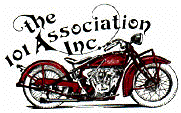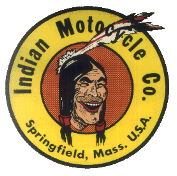Congrats to a really nice bike! It looks like you don't need to tamper much with it before first ride! other than standard checkups, points and valve clearence. Points has a tendency to oxidize without use so just one pull only, with a points file, is a way to eliminate trouble with that. Sandpaper/emery cloth is a no-no.
However I would remove the oil pump and the ventilation tube from the engine just to make a checkup that the pump is turning properly, and of course wash through it with kerosene. That could be done at the same time with the engine internals also, first empty the crankcase from old oil, then pressure wash with kerosene or diesel through the pinion shaft, the hole is open when the pump is removed. That could be controversial with some individuals, but I am of that opinion that crud will get loose at some point or another so I want it removed, and that is better to flush out when the engine is not running. Fill up the crankcase via the hole for the ventilation tube on the cam case, in order to clean out the cam compartment. And kick through for a while. Empty the crankcase and check for strange things or rust colour in the run off.
Fill fresh oil through the same hole so the cams get some oil for the first start. Empty the oil from the crankcase after the first start and fill new oil at the level plug on the crankcase left side. A gasket at the vent tube flange can make the thin vent valve hang up, so no gasket, only a small amount of gasket cement is sufficient. Many riders has found the engine having less oil leaks when discarding the valve plate and fit a modern PCV valve.
Clutch plates has a bad habit to stick together after a lengthy standstill. 30 years ago King clutch or KIWI clutch wasn't available so probably originals are fitted. Frankly I think new friction plates is such an improvement from originals so I wouldn't bother use them old ones at all, I would buy and change for new plates and springs right away!
Old petrol can go gummy and cause some problems. I would clean out the bowl and at the same time check valve condition, a bad valve is trouble, and an old cork or plastic float is trouble. Brass ones are heavy and wear on the valve more than needed. I prefer floats that is made by Tom Cotten as he has done extensive research on materials that cope with all sorts of petrol.
Most of the clutch and gearbox grub is collected in the bottom of the gearbox. If the engine is restored and not run, as it looks like on your pictures, not much would be found there but still a wash through with kerosene can flush out some interesting stuff. When/if you change clutch plates, through the gearbox bottom plug you can insert a small L shaped tube where you might pressure wash the internals with kero if you fancy that.
I use an old deep oven pan as a collector and line it with a cloth of an old sheet. when I am finished and lift up the sheet from the pan through the kero or oil in the pan, I can easily inspect the debris.
Bleeding of the oil pump is important! It takes longer than anticipated, let clear air free oil run thro for a good while before you close up the bleed hole with the screw. I always use Locktite 561 on oil and gas fittings. And other Locktite products on every single thread except headbolts and exhaust nuts... Makes me feel important! :-) Good luck and happy trails!


